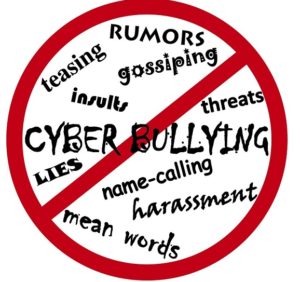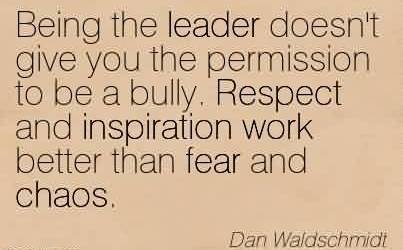Bullies have mastered the art of labeling, and giving nicknames to co-workers, causing internal harm to the agency. Bullying and verbal abuse can lead to social exclusion in the work place.
Consistent workplace culture training can help set standards of acceptable (and unacceptable) behavior.
Workplace Bullying that went too far
One police officer shared a story in our class about the loss of his partner to suicide. The constant bullying from other officers, and calling of degrading names went to long.
No note, no warning, no good-bye to his family… he used his own revolver, to end his pain. Mental abuse can scar a person and an agency, to the point of no return.
Workplace Bullying does not create VALUE in any organization, and should not be tolerated in the public service profession ~ Linda Webb, Co-founder of RITE Academy.

As public service professionals we can be overly critical, demeaning, and lack empathy when interacting with our zone partners, and others in our department. Commanders that stand up to bullies and unprofessional workplace behavior, are respected more when they report unprofessional behavior, vs look the other way.
Bullying may take many forms, from physical assault, verbal abuse, and social exclusion to cyber bullying. Generally, to be considered bullying, the practice must be carried out either by an individual or a group within the workplace.
In 2017, the Workplace Bullying Institute estimated that 60.3 million workers in the U.S.A. alone have been affected by workplace bullying.
The 6-Signs of Bullying in the Workplace:
-
Likes to upset others
Do you know employees that repeatedly upset and bully others around them? Co-workers that are often mistreated will eventually complain. And if their complaints are not heard, and nothing changes, they could make matters worse for themselves and others.
-
Lack of Empathy
Those who can’t connect with co-workers or act like they just don’t care for others well-being often lack empathy. They may “think” they care, but don’t know how to communicate it. Walking in another person’s shoes is the first step.
-
Aggressive Behavior
This may include openly shouting, threatening or humiliating others in the workplace, as well as outside the department. If you do not VALUE your co-workers, the workplace culture will diminish.
-
Thrives Around Insecure People
A classic sign of bullying is when you make yourself feel better by evoking discomfort or insecurity in others. This is often seen by persistently picking on someone or deliberately setting them up to fail.
-
Spreading Malicious Rumors
It may not seem like a big deal (to the bully) but spreading rumors can take an agency down at the knees.
Defined as a “Defamation of character”towards another, spreading lies is against what being a law enforcement officer is, and should not be tolerated.
-
Misuse your power or position
For example, you may intentionally block someone’s promotion or take away duties and responsibilities without any rationale or substance. Other possibilities include deliberately and persistently ignoring or excluding someone from joint collaborations and social events.
How can bullying affect an individual?
People who are the targets of bullying may experience a range of effects that include:
- Shock and Anger
- Feelings of frustration and/or helplessness
- Increased sense of vulnerability
- Loss of confidence
- Physical symptoms such as:
- Inability to sleep.
- Loss of appetite.
- Psychosomatic symptoms such as:
- Stomach pains.
- Headaches.
- Panic or anxiety, especially about going to work
- Family tension and stress
- Inability to concentrate
- Low morale and productivity
How can bullying affect the workplace?
Bullying affects the overall “health” of an organization. An “unhealthy” workplace can have many effects including:
- Increased absenteeism
- Increased turnover
- Increased stress
- Increased costs for employee assistance programs (EAPs), recruitment, etc
- Increased risk for accidents / incidents
- Decreased productivity and motivation
- Decreased morale
Creating a Professional Workplace
 As an instructor of Professional Workplace Culture for Public Service Professionals, we travel the county and hear many stories of unprofessional behaviors that often includes bullying.
As an instructor of Professional Workplace Culture for Public Service Professionals, we travel the county and hear many stories of unprofessional behaviors that often includes bullying.
If you have internal Bullies within your department mistreating employees, can you only imagine the damage they can do in your community, while hurting your agency’s image.
Bullying can trigger an array of mental health issues including depression, burnout, increased absenteeism, low self-confidence, and stress. Take a stand within your agency… ZERO Tolerance for Bully’s

RITE Academy teaches Professional Workplace Culture, encompassing the following components that addresses the Bullies who may be lurking in your department:
Unprofessional issues that breakdown workplace culture:
- The Entitlement Complex
- Rumors and Gossip
- Mental Loop Leads to Negative Banter
- Implicit Bias and Knowing Your Hot Button
- Avoiding Block-out Syndrome
- 7-types of Workplace Harassment
- Use of Profanity
- Rude and Condescending Behavior
- Improper Jokes or Nicknames
When is the last time you conducted Professional Workplace Culture Training for your department to address the Bullies in your department?
Are you a bully? Here’s how to tell original post
 About RITE Officer Training – It starts with helping officers communicate with themselves, and others more effectively. The RITE Ladder Tool teaches EI & SI that builds Career resiliency, improves Department morale, helps Professional workplace culture and reduces police misconduct while mitigating risk.
About RITE Officer Training – It starts with helping officers communicate with themselves, and others more effectively. The RITE Ladder Tool teaches EI & SI that builds Career resiliency, improves Department morale, helps Professional workplace culture and reduces police misconduct while mitigating risk.
Check our EVENTS page for current trainings. Looking for private classes, where we come to you… Contact us HERE


